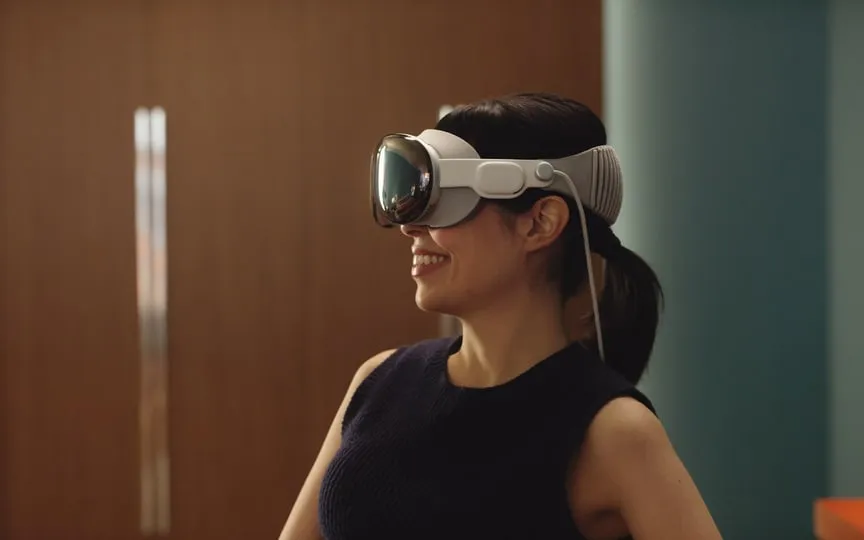Apple’s Vision Pro Explores Future Growth Opportunities in Surgery, Aircraft Repair, and Teaching
Apple Inc. is preparing to release its Vision Pro mixed-reality headset on February 2nd and is already considering potential applications for the device in various work environments such as surgical procedures, aircraft maintenance, and educational settings for students.
In a video sent to employees this week, Apple executives Mike Rockwell and Alan Dye discussed the product’s development and potential growth areas for the still-nascent technology. Bloomberg News caught up with the conversation, which came just before Apple began accepting pre-orders for the Vision Pro on Friday.
Asked about “cool” ways people could use the $3,499 Vision Pro, Rockwell cited healthcare, education and training as key areas.
“Often surgeons struggle to look at screens during procedures where information is being disseminated,” said Rockwell, vice president of device management. “Apple Vision Pro could bring all of this together and hopefully improve patient outcomes.”
Separately, the company told employees in a memo Thursday that they are eligible for a 25% discount on Vision Pro. That’s less than the 50% discount Apple offered when it launched the smartwatch and HomePod smart speaker — even though those products didn’t carry such a hefty price tag. That would bring the cost down to about $2,600 before taxes and options.
Employees also get $500 to spend on a Mac every three years, a credit they can apply toward a headset. And Apple will reimburse the cost of the product’s prescription lenses, according to a memo seen by Bloomberg.
The Cupertino, California-based company has marketed the Vision Pro as a consumer device for gaming, video and communication. But Apple is looking for ways to broaden its appeal. Technicians or aircraft mechanics could use it to get “high-quality training in ways they’ve never been able to experience before,” Rockwell said.
Rockwell added that he’s “very excited about what we can do in learning and education, because that’s another superpower of Apple Vision Pro.”
Apple did not immediately respond to a request for comment.
Two Rockwell lieutenants – Dave Scott and Yaniv Gur – are researching new applications for the Vision Pro. Scott previously served as the head of Apple’s automotive team before moving briefly to run a mobile MRI device. He is now responsible for how companies can use headphones. Gur, who previously led the design of Apple’s productivity apps, will oversee the device’s potential educational capabilities.
Apple is betting that mixed reality – the merging of virtual and augmented reality – will eventually become a significant source of revenue. But the high price makes it difficult to win over consumers.
Vision Pro’s success also depends on third-party developers. While Apple has offered content from many major entertainment providers, including Walt Disney Co., others have refused to support the new device.
Netflix Inc., Spotify Technology SA and Google’s YouTube don’t plan to offer Vision Pro apps on their services, forcing users to view their content through a device’s web browser — a less immersive experience.
Apple is hoping that the groundbreaking technology in the headphones will help get converters.
“We tried to make a product that was a tool, not a toy,” Rockwell said. “To make a product for productivity or high-end entertainment, displays had to be exceptional, so we put a lot of effort into creating a new, uncompromising high-resolution display system.”
Also read these top stories of today:
Artificial intelligence chatbots unexpectedly give birth to chip manufacturers! Artificial intelligence will be the new driver of growth in the near future, and the entire chip industry will benefit. Yes, the popularity of chatbots is a surprise for TSMC. Read all about it here.
AI paranoia? Davos leaders are concerned about artificial intelligence fake news. But they mustn’t forget how Facebook and TikTok are spreading it. Dive here. Was it interesting? Go ahead and share it with everyone you know.
Apple Watch without blood oxygen feature better? Masimo CEO Joe Kiani, who is waging a legal battle with Apple Inc over the Apple Watch’s blood oxygen feature, said consumers are better off without the iPhone maker’s version of the technology. Know all about it here.




